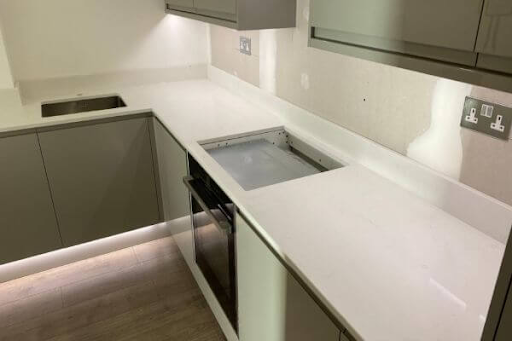
Stones of Turkey
Sammy Chris
Episode 1: Different forms of commercial rocks found in Turkey
Granite is a natural stone that shares similarities with diabase, serpentine, basalt, crystalline and schist as all of these stones are formed based on magma. The components of these rock types have minerals such as silicates and other opaque minerals, which makes the Granite blocks quite difficult to cut, shape and polish. That is why they are much more resistant compared to other types of stone.
Granite is highly demanded not only in developed countries but also in the local market of Turkey. The characteristics of granite, which are its beautiful appearance, sturdiness over time, durability even in external use and high resistance to erosion make it attractive for both indoor and outdoor decorations.
The major granite types in Turkey are:
Ayvalik Granite
It is easy to take in the form of blocks and plates. While cutting sides and corners is easier, the process of shaping and polishing is normal but cutting it can be slow. It is appropriate for indoors and outdoors and generally used for plating, coating and decoration.
Thracian Granite
Its quality and properties are just the same as Ayvalik granite. It is also easy to take in the form of blocks and plates. Cutting sides and corners is easier, the process of shaping and polishing is normal but cutting it can be slow. It is appropriate for indoors and outdoors and generally used for plating, coating and decoration.
Granite Sources in Turkey
Granite reserves are in Ordu, Rize, Trabzon, Kirklareli, Kirsehir, Bolu, Izmit, Canakkale and Izmir. The sources of other magma based stones such as diabase, serpentine, basalt, crystalline schist and gyans in Turkey are Kapidag in Balikesir, Armutlu in Bursa, Sivrihisar in Eskisehir, Gumushane, Zambakkaya (especially diabase) in Gemlik and Kurselik-Abbaslik (especially serpentine) in Bilecik.
Travertine
Travertine is the outcome of the separation of carbon dioxide from calcium carbonate. The colours of travertine are diverse and they range from white to brown. It is easy to work on travertine as it is very light. Travertine is generally used as a coating material on tiles, mouldings, flooring, pavers, steps, countertops, basins, vanities and fireplaces. Travertine also can be used in the coating of floors and walls. Travertine is generally preferred for outdoor use since it is durable, easy to apply and abundant to find.

Travertine sources in Turkey
With more than 650 million metric tons, the broadest reserves of different travertine types are located in Denizli in southwest Turkey. Other sources of travertine in Turkey are: Antalya, Bursa, Malikoy - Haymana in Ankara, Eskipazar in Cankiri, Sicak Cermik in Sivas, Adana, Antakya, Reyhaniye, Nigde (especially boron).
Onyx
Onyx is crystal-like and semi-transparent, which is also known as alabaster. Onyx has a wide variety of colour selections. Working with Onyx is easy because it is quite light. It is generally used as a coating material. Onyx is broadly used in tiles of floor and wall, mosaics, moulding, and paver. Vanities, sinks, showers, bathtubs, basins, countertops and even pools can be designed with onyx.

Onyx sources in Turkey
Sogut in Bilecik, Mudurnu in Bolu, Avanos - Avci – Terme in Kirsehir, Akhisar in Manisa, Cermik in Sivas and Cubuk in Ankara.
Conglomerate and Breccia
The fragments of marble carried by a stream through long distances would have round shapes. When these fragments larger than 2 millimetres are mixed with sand and natural cement, the new mixture is called a conglomerate. After cutting, shaping and polishing, it can be used as a coating product.
When the fragments of marble crushed by the tectonic movement of the earth are mixed with chemically precipitated cement, the new material formed is called breccia. Breccia is known for its vein-like patterns.
Conglomerates and breccias sources in Turkey
Globe and Sogut in Bilecik, Orhaneli in Bursa, Harmantepe-Dokurcun in Sakarya (with the colour of grey), Kutluca in Gebze Istanbul (with the colour of beige), Hayman in Ankara (with the colour of beige), Iskenderun (with the colour of black), Bozkir in Konya (with colours of brown and red), Toros in Adana (with the colour of beige).


